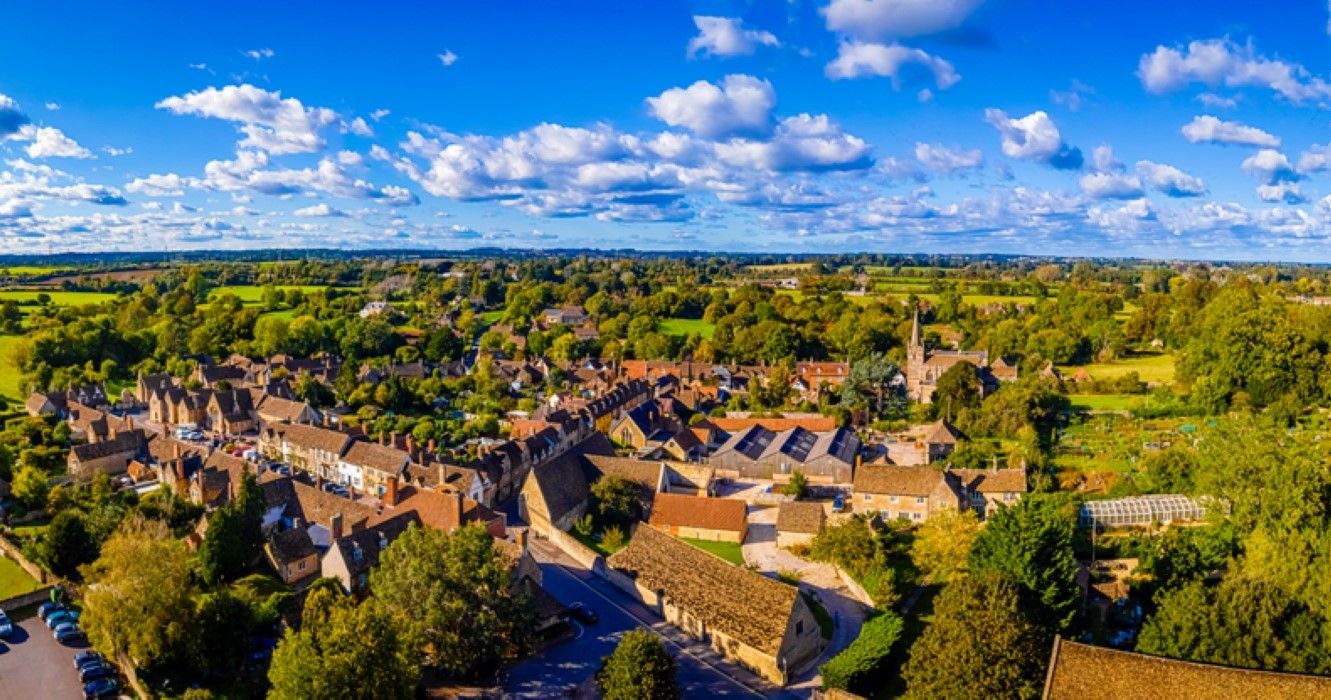The Cotswolds are famous for their picture-perfect villages with honey-colored structures, thatched house roofs, breathtaking scenery, heritage, and tradition. While Bibury is one of the most beautiful villages in England, the charming village of Lacock shines out as being one of the most attractive towns in the Cotswolds, giving the impression that people have entered a time machine. The town, which once thrived as a wool trading township, has been wonderfully conserved and has remained untouched.
The 13th-century hamlet, which features numerous limestone and half-timbered homes with lime washes, served as a backdrop for several television and movie projects, notably Moll Flanders, Harry Potter, Emma, and Pride and Prejudice. Lacock is a little Cotswolds town with just four avenues, but it boasts a surprising amount of attractions. The atmosphere is also really pleasant. Everybody is quite friendly, keen to converse, and helpful. Boasting half-timbered houses, honey-colored structures, a broad high street, winding streets, and fantastic eccentricity, it still exudes the appeal of an eighteenth-century hamlet. It is the ideal location to enjoy a morning, lunchtime, or an entire day exploring and taking in the scenery. So, let us look out at how to spend your time in the charming village of Lacock.
Things To Explore In The Town
Walk Around The Abbey
The tour of Lacock Abbey is among the main draws to the town. The magnificent 13th-century structure is fashioned from mellow, yellow Cotswold limestone and is located on lovely grounds.
The Abbey was transformed into a stately home by the numerous later expansions, as previously indicated, but it is still an attractive destination to see. The eighteenth century saw the addition of the octagonal spire and striking bay window.
The monastery and abbey chambers, which served as Hogwarts School's courtyards in several of the Harry Potter movies, are a must-see for every Potterhead.
The Fox Talbot Museum
Among the many museums in England is the Fox Talbot Museum. It is difficult to believe that the invention of photography might have been in this tiny hamlet.
William H. Fox Talbot was born in 1800, and his family resided in the Lacock Abbey. He was able to take a picture of an Abbey pane in August 1835, creating the very first photograph negative in history. How people perceive capturing the environment and printing it was altered by this little picture.
The Fox Talbot Gallery walks visitors over Fox Talbot's place in photography's past. It provides information on his creative process and the creation of the premiere negative. Additionally, there are many old cameras in the museum dating to the past.
Visit The St. Cyriac's Church
The charming St. Cyriac's church is the town's main church. The current church was constructed on the location of a Saxon temple despite its being Norman in style.
It is devoted to St. Cyriac, a monk and martyr from Normandy who perished during Diocletian's scourge. It is another representative of the fourteenth-century building in the town.
The Tithe Barn
The fourteenth-century Tithe Barn is located at the intersection of High St. and East St. The barn was joined to the Abbey while the tithe collection was in culture.
Spacious and beautiful, the barn features a cruck-framed ceiling that gracefully curves over the stone sidewalls. It is a remarkable example of the intricate trusses used to sustain the roof because it is shaped like a T.
The tithe restriction has been reinstated over time, but it still stands today, even with a base made of beaten soil. Over the decades, the barn has served as a market square, grain storage and threshing facility, exhibition gallery, and filming set, among other things.
What Popular Food Places To Try In Lacock
The Red Lion
The Red Lion is located at the end of High Street. The restaurant offers both vegan and vegetarian options for modern British tavern fare. It includes magnificent Georgian decor and a sizable open furnace. They provide a variety of authentic regional brews and home-cooked feasts made with produce from area farms.
The Lacock Bakery
The Lacock Bakery, located in a historic home on Church Street, seems to be among the town's most attractive structures. As one approaches the Lacock Bakery, they will be met by the aroma of freshly-baked bread. The bakery, among the most well-liked stores in the town, offers a variety of bread, such as a five-seeded country baguette or their corn with sun-dried tomatoes. Along with bread, they also offer pies, chocolate chip cookies, carrot cake, and adorable sugar bunnies. Visitors can take their treats home to savor later or relax around the cottage dining table and enjoy a coffee or tea.
The George Inn
The George Inn serves traditional pub fare such as fish and chips, bacon, egg, and fries, or sausage and potato mash, along with hamburgers, tarts, chicken wings, and a variety of vegetarian and vegan options.
Sign Of The Angel
Another well-liked Lacock tavern with a lovely timber-framed facade is The Sign of the Angel. The structure was constructed in the fifteenth century and presently serves as a typical tavern and lodging in the town. The food uses fresh, regional ingredients and has options for both vegetarians and non-vegetarians. The menu features exquisite salads, pastries, and seafood, along with traditional lamb and hog meals.
The traditional hamlet of Lacock seems to be a beautiful location to visit when people need a vacation from urban life. Visitors will experience the tranquillity of the small and charming village and a trip into the past.

